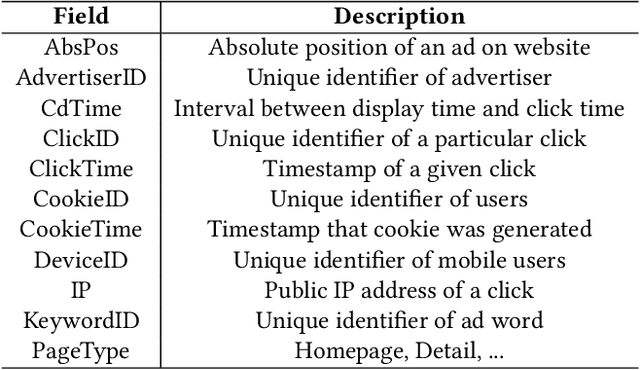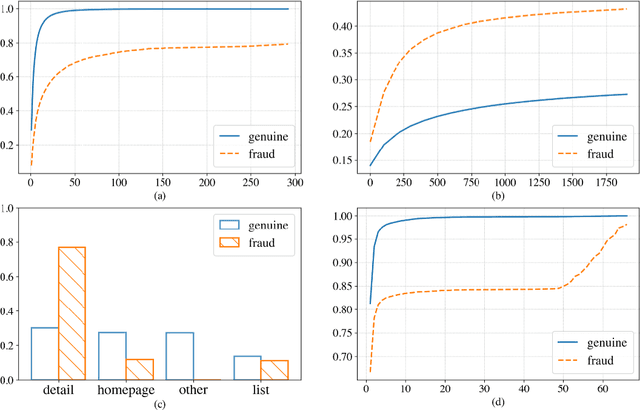Weibin Li
MMCS: A Multimodal Medical Diagnosis System Integrating Image Analysis and Knowledge-based Departmental Consultation
Oct 20, 2024



Abstract:We present MMCS, a system capable of recognizing medical images and patient facial details, and providing professional medical diagnoses. The system consists of two core components: The first component is the analysis of medical images and videos. We trained a specialized multimodal medical model capable of interpreting medical images and accurately analyzing patients' facial emotions and facial paralysis conditions. The model achieved an accuracy of 72.59% on the FER2013 facial emotion recognition dataset, with a 91.1% accuracy in recognizing the happy emotion. In facial paralysis recognition, the model reached an accuracy of 92%, which is 30% higher than that of GPT-4o. Based on this model, we developed a parser for analyzing facial movement videos of patients with facial paralysis, achieving precise grading of the paralysis severity. In tests on 30 videos of facial paralysis patients, the system demonstrated a grading accuracy of 83.3%.The second component is the generation of professional medical responses. We employed a large language model, integrated with a medical knowledge base, to generate professional diagnoses based on the analysis of medical images or videos. The core innovation lies in our development of a department-specific knowledge base routing management mechanism, in which the large language model categorizes data by medical departments and, during the retrieval process, determines the appropriate knowledge base to query. This significantly improves retrieval accuracy in the RAG (retrieval-augmented generation) process. This mechanism led to an average increase of 4 percentage points in accuracy for various large language models on the MedQA dataset.Our code is open-sourced and available at: https://github.com/renllll/MMCS.
Research on Predicting Public Opinion Event Heat Levels Based on Large Language Models
Sep 27, 2024Abstract:In recent years, with the rapid development of large language models, serval models such as GPT-4o have demonstrated extraordinary capabilities, surpassing human performance in various language tasks. As a result, many researchers have begun exploring their potential applications in the field of public opinion analysis. This study proposes a novel large-language-models-based method for public opinion event heat level prediction. First, we preprocessed and classified 62,836 Chinese hot event data collected between July 2022 and December 2023. Then, based on each event's online dissemination heat index, we used the MiniBatchKMeans algorithm to automatically cluster the events and categorize them into four heat levels (ranging from low heat to very high heat). Next, we randomly selected 250 events from each heat level, totalling 1,000 events, to build the evaluation dataset. During the evaluation process, we employed various large language models to assess their accuracy in predicting event heat levels in two scenarios: without reference cases and with similar case references. The results showed that GPT-4o and DeepseekV2 performed the best in the latter case, achieving prediction accuracies of 41.4% and 41.5%, respectively. Although the overall prediction accuracy remains relatively low, it is worth noting that for low-heat (Level 1) events, the prediction accuracies of these two models reached 73.6% and 70.4%, respectively. Additionally, the prediction accuracy showed a downward trend from Level 1 to Level 4, which correlates with the uneven distribution of data across the heat levels in the actual dataset. This suggests that with the more robust dataset, public opinion event heat level prediction based on large language models will have significant research potential for the future.
Shifting More Attention to Breast Lesion Segmentation in Ultrasound Videos
Oct 03, 2023Abstract:Breast lesion segmentation in ultrasound (US) videos is essential for diagnosing and treating axillary lymph node metastasis. However, the lack of a well-established and large-scale ultrasound video dataset with high-quality annotations has posed a persistent challenge for the research community. To overcome this issue, we meticulously curated a US video breast lesion segmentation dataset comprising 572 videos and 34,300 annotated frames, covering a wide range of realistic clinical scenarios. Furthermore, we propose a novel frequency and localization feature aggregation network (FLA-Net) that learns temporal features from the frequency domain and predicts additional lesion location positions to assist with breast lesion segmentation. We also devise a localization-based contrastive loss to reduce the lesion location distance between neighboring video frames within the same video and enlarge the location distances between frames from different ultrasound videos. Our experiments on our annotated dataset and two public video polyp segmentation datasets demonstrate that our proposed FLA-Net achieves state-of-the-art performance in breast lesion segmentation in US videos and video polyp segmentation while significantly reducing time and space complexity. Our model and dataset are available at https://github.com/jhl-Det/FLA-Net.
Spectral Heterogeneous Graph Convolutions via Positive Noncommutative Polynomials
May 31, 2023Abstract:Heterogeneous Graph Neural Networks (HGNNs) have gained significant popularity in various heterogeneous graph learning tasks. However, most HGNNs rely on spatial domain-based message passing and attention modules for information propagation and aggregation. These spatial-based HGNNs neglect the utilization of spectral graph convolutions, which are the foundation of Graph Convolutional Networks (GCN) on homogeneous graphs. Inspired by the effectiveness and scalability of spectral-based GNNs on homogeneous graphs, this paper explores the extension of spectral-based GNNs to heterogeneous graphs. We propose PSHGCN, a novel heterogeneous convolutional network based on positive noncommutative polynomials. PSHGCN provides a simple yet effective approach for learning spectral graph convolutions on heterogeneous graphs. Moreover, we demonstrate the rationale of PSHGCN in graph optimization. We conducted an extensive experimental study to show that PSHGCN can learn diverse spectral heterogeneous graph convolutions and achieve superior performance in node classification tasks. Our code is available at https://github.com/ivam-he/PSHGCN.
Label Information Enhanced Fraud Detection against Low Homophily in Graphs
Feb 21, 2023



Abstract:Node classification is a substantial problem in graph-based fraud detection. Many existing works adopt Graph Neural Networks (GNNs) to enhance fraud detectors. While promising, currently most GNN-based fraud detectors fail to generalize to the low homophily setting. Besides, label utilization has been proved to be significant factor for node classification problem. But we find they are less effective in fraud detection tasks due to the low homophily in graphs. In this work, we propose GAGA, a novel Group AGgregation enhanced TrAnsformer, to tackle the above challenges. Specifically, the group aggregation provides a portable method to cope with the low homophily issue. Such an aggregation explicitly integrates the label information to generate distinguishable neighborhood information. Along with group aggregation, an attempt towards end-to-end trainable group encoding is proposed which augments the original feature space with the class labels. Meanwhile, we devise two additional learnable encodings to recognize the structural and relational context. Then, we combine the group aggregation and the learnable encodings into a Transformer encoder to capture the semantic information. Experimental results clearly show that GAGA outperforms other competitive graph-based fraud detectors by up to 24.39% on two trending public datasets and a real-world industrial dataset from Anonymous. Even more, the group aggregation is demonstrated to outperform other label utilization methods (e.g., C&S, BoT/UniMP) in the low homophily setting.
Layout-aware Webpage Quality Assessment
Feb 05, 2023Abstract:Identifying high-quality webpages is fundamental for real-world search engines, which can fulfil users' information need with the less cognitive burden. Early studies of \emph{webpage quality assessment} usually design hand-crafted features that may only work on particular categories of webpages (e.g., shopping websites, medical websites). They can hardly be applied to real-world search engines that serve trillions of webpages with various types and purposes. In this paper, we propose a novel layout-aware webpage quality assessment model currently deployed in our search engine. Intuitively, layout is a universal and critical dimension for the quality assessment of different categories of webpages. Based on this, we directly employ the meta-data that describes a webpage, i.e., Document Object Model (DOM) tree, as the input of our model. The DOM tree data unifies the representation of webpages with different categories and purposes and indicates the layout of webpages. To assess webpage quality from complex DOM tree data, we propose a graph neural network (GNN) based method that extracts rich layout-aware information that implies webpage quality in an end-to-end manner. Moreover, we improve the GNN method with an attentive readout function, external web categories and a category-aware sampling method. We conduct rigorous offline and online experiments to show that our proposed solution is effective in real search engines, improving the overall usability and user experience.
Graph4Rec: A Universal Toolkit with Graph Neural Networks for Recommender Systems
Dec 08, 2021



Abstract:In recent years, owing to the outstanding performance in graph representation learning, graph neural network (GNN) techniques have gained considerable interests in many real-world scenarios, such as recommender systems and social networks. In recommender systems, the main challenge is to learn the effective user/item representations from their interactions. However, many recent publications using GNNs for recommender systems cannot be directly compared, due to their difference on datasets and evaluation metrics. Furthermore, many of them only provide a demo to conduct experiments on small datasets, which is far away to be applied in real-world recommender systems. To address this problem, we introduce Graph4Rec, a universal toolkit that unifies the paradigm to train GNN models into the following parts: graphs input, random walk generation, ego graphs generation, pairs generation and GNNs selection. From this training pipeline, one can easily establish his own GNN model with a few configurations. Besides, we develop a large-scale graph engine and a parameter server to support distributed GNN training. We conduct a systematic and comprehensive experiment to compare the performance of different GNN models on several scenarios in different scale. Extensive experiments are demonstrated to identify the key components of GNNs. We also try to figure out how the sparse and dense parameters affect the performance of GNNs. Finally, we investigate methods including negative sampling, ego graph construction order, and warm start strategy to find a more effective and efficient GNNs practice on recommender systems. Our toolkit is based on PGL https://github.com/PaddlePaddle/PGL and the code is opened source in https://github.com/PaddlePaddle/PGL/tree/main/apps/Graph4Rec.
LiteGEM: Lite Geometry Enhanced Molecular Representation Learning for Quantum Property Prediction
Jun 28, 2021

Abstract:In this report, we (SuperHelix team) present our solution to KDD Cup 2021-PCQM4M-LSC, a large-scale quantum chemistry dataset on predicting HOMO-LUMO gap of molecules. Our solution, Lite Geometry Enhanced Molecular representation learning (LiteGEM) achieves a mean absolute error (MAE) of 0.1204 on the test set with the help of deep graph neural networks and various self-supervised learning tasks. The code of the framework can be found in https://github.com/PaddlePaddle/PaddleHelix/tree/dev/competition/kddcup2021-PCQM4M-LSC/.
Multimodal and Contrastive Learning for Click Fraud Detection
May 08, 2021



Abstract:Advertising click fraud detection plays one of the vital roles in current E-commerce websites as advertising is an essential component of its business model. It aims at, given a set of corresponding features, e.g., demographic information of users and statistical features of clicks, predicting whether a click is fraudulent or not in the community. Recent efforts attempted to incorporate attributed behavior sequence and heterogeneous network for extracting complex features of users and achieved significant effects on click fraud detection. In this paper, we propose a Multimodal and Contrastive learning network for Click Fraud detection (MCCF). Specifically, motivated by the observations on differences of demographic information, behavior sequences and media relationship between fraudsters and genuine users on E-commerce platform, MCCF jointly utilizes wide and deep features, behavior sequence and heterogeneous network to distill click representations. Moreover, these three modules are integrated by contrastive learning and collaboratively contribute to the final predictions. With the real-world datasets containing 2.54 million clicks on Alibaba platform, we investigate the effectiveness of MCCF. The experimental results show that the proposed approach is able to improve AUC by 7.2% and F1-score by 15.6%, compared with the state-of-the-art methods.
 Add to Chrome
Add to Chrome Add to Firefox
Add to Firefox Add to Edge
Add to Edge